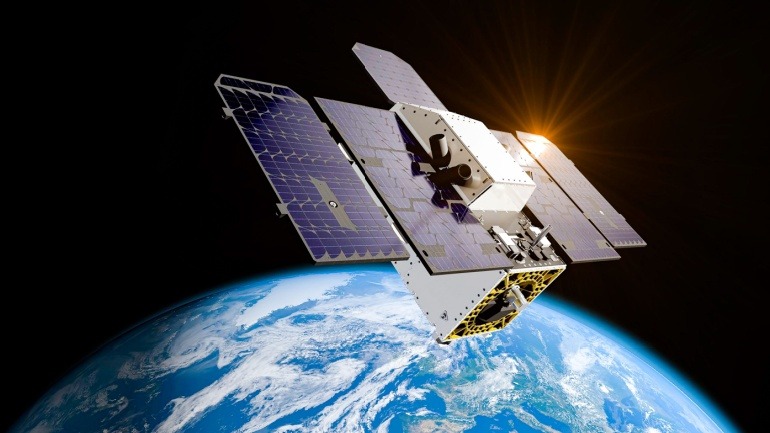We’ve come a long way since mankind first used smoke signals to communicate, and even farther since cavemen drew pictures on walls. Today, we’re living in a world where we can communicate with anyone, anywhere in the world.
Telecommunications has changed dramatically throughout the years. Let’s look at how it grew from its humble origins to what it is now.
Rock carvings
Petroglyphs are more commonly found than pictographs, and these images were created by carving, engraving or scratching the rock’s surface. Often, these images were important forms of pre-symbol writing and were used in the earliest forms of communication and signage. The oldest art in this particular category is the Bhimbetka Petroglyphs Cupules, in the Auditorium cave situated at Bhimbetka in India, that date back to the Acheulean period, which began between 1.7 million and 1.5 million years ago.
Cave paintings
Some of the earliest forms of communication are cave paintings, known as pictographs. Through these drawings, people were able to mark territories or capture significant events. The Maltravieso cave in Cáceres, Spain, is home to the earliest piece of non-figurative cave art, a red hand stencil dated to be older than 64,000 years. The world’s oldest known figurative artwork is three wild pigs painted deep in a limestone cave on the Indonesian island of Sulawesi, dated to have been painted at least 45,500 years ago in the Upper Paleolithic era.
Smoke and fire signals
The smoke signal is one of the oldest forms of long-distance communication, and was most often seen in North America and China. Soldiers guarding the Great Wall of China first used smoke signals around 900 BC. It is said that the renowned military strategist Hannibal used smoke signals to signify his victory over the Gauls when he crossed the Alps in about 218 BC. Ancient writers, however, say the Greeks used signal fires even earlier, around the 3rd century BC. In general, smoke signals can warn of danger, deliver news, or assemble people.
Drums
Drums were used as an early method of long-distance communication to deliver detailed messages from village to village. Drums first emerged in China around 5500 BC and then expanded throughout Asia. Drums were later found to have been used in Sri Lanka and Africa between 1000 and 500 BC. Drumming came to Europe via Mediterranean trade routes around 1200 AD. Later, about 1500 AD, the slave trade brought African drums to America.
Pigeon express
Around the 5th century BC, Persia and Assyria developed the first pigeon communications system. Doves and pigeons were used as messenger birds that travelers would take with them, attach notes to the birds, and then release them to return home. Later, the Romans and Egyptians would employ pigeons for military communications and to report the results of athletic events.
Light signals
The heliograph was first mentioned to be used at the Greek Battle of Marathon in 490 BC, when soldiers flashed reflections of sunlight or torchlight off of their polished metal shields to communicate with one another. This concept was adopted in 1867 by British Admiral Phillip Colomb, who took a signal lamp and created his own code to allow the ships in his fleet to communicate quickly. The system was eventually superseded by Morse code.
Semaphores
Semaphore is a type of visual signaling that uses flags, disks, hands or lights. Semaphore signaling from high towers was used to relay messages between distant sites prior to the introduction of the telegraph. The earliest semaphore, a hydraulic semaphore, was created in ancient Greece in the 4th century BC, followed by the marine flag semaphore in the 15th century.
Postal system
Cyrus the Great, a Persian ruler, is credited for founding the world’s first mail service during the period of 550 BC – 521 BC. Later, other ancient civilizations such as the Egyptians, Romans and Chinese developed their own postal systems. When Charles I made the Royal Mail service available to the general public in 1635, the modern postal system as we know it today was born. The United States was somewhat behind Great Britain, since its postal service (USPS) was established in 1775.
The telegraphs
The first optical telegraph system was developed in 1792 by two French innovators, the Chappe brothers,, using the nautical flag semaphore as a starting point. The optical telegraph used a pendulum method to send messages from one tower to the next while its mechanical arms swung back and forth.
In 1837, the first commercial electrical telegraph, called a needle telegraph, was created by English scientists Charles Wheatstone and William Fothergill Cooke.
Shortly after the Cooke and Wheatstone telegraph, in 1838, Samuel Morse and colleagues devised an electrical telegraph, which employed a point-to-point text message method. Morse sent his first telegraph message from Washington, D.C. to Baltimore, Maryland, in 1844. The Morse coding method was adopted as a worldwide communications standard in 1865. By 1866, a telegraph line had been built across the Atlantic Ocean, connecting the United States to Europe.
The telephone
The electric telegraph was still popular when Alexander Graham Bell introduced the telephone in 1876. Telephones became a vital element of every family home and workplace within 50 years of its invention. This technology converted human speech into signals, with those signals being routed through wires.
By 1900, Bell’s telephone system had spawned approximately 600,000 phones; by 1905, that number had risen to 2.2 million, and by 1910, it had climbed to 5.8 million. The telephone was by far the most dependable and practical mode of communication. In 1973, Martin Cooper unveiled the first mobile phone, once again completely altering the way people would communicate.
Text messages
Friedhelm Hillebrand and Bernard Ghillebaert pioneered the SMS idea in the Franco-German GSM partnership in 1984. Years later, Neil Papworth, a former Sema Group Telecoms developer, sent the first text message in 1992. Papworth had to compose the message on a PC because mobile phones did not have keyboards at the time. In 1993, Nokia was the first handset manufacturer whose GSM phone infrastructure enabled user-sent SMS text messages.
The Internet
The Internet was formally born on January 1, 1983. The Internet as a system and the Internet communication protocols that we use today were created by computer scientists Vinton Cerf and Bob Kahn.
The World Wide Web was created in 1990 by Tim Berners-Lee and soon the Internet began to be supported by satellites. We can now search for anything, anywhere in the world. Wi-Fi wireless connections first appeared in 1991. The generic use of emails, social networking and online messaging all followed along with the advance of the Internet.
Satellite communications
In 1998, a company called Iridium deployed the first canopy of 64 satellites. They also created the first hand-held satellite phones, which were smaller and less bulky than the previous “bag” phones. This advancement transformed mobile communications and paved the way for the current smartphone.
VoIP
At MIT’s Lincoln Lab in 1973, Bob McAuley, Ed Hofstetter, and Charlie Radar created the first voice packet over ARPANET, an experimental computer network that was the predecessor of the Internet first used in 1969. The cornerstone of contemporary VoIP technology, Linear Predictive Coding (LPC), made it feasible for this speech transmission to take place.
Developer Brian C. Wiles set out to create software in 1989 that would enable online gamers to talk to each other through dial-up modems as they played. He developed RASCAL, technically the initial VoIP application, which was the first method to transfer voice across Ethernet networks.
Businesses adopted the Internet at a rapid pace in the early 1990s. To meet company demands, many internet-based business phone systems have become available in the market. Speak Freely was the first consumer-ready commercial VoIP program, debuting in 1991. Soon after, VocalTec’s VocalChat and Internet Phone application appeared.
Today, VoIP adoption around the world is growing at a rapid pace. As per The Business Research Company’s “Voice over Internet Protocol (VoIP) Global Market Report 2022”, the VoIP market size is expected to grow from $94.16 billion in 2021 to $107.03 billion in 2022 at a compound annual growth rate (CAGR) of 13.7%
Conclusion
Looking back, our world of communications has evolved into something truly mind-blowing. However, it’s easy to get caught up in the present, and it’s important to remember that we’ve only just scratched the surface of what’s possible when it comes to advancing human connectivity. Technology is only going to get better and better, and humans are going to keep finding new ways to connect with each other.







